When I was in school,historywas one of my favorite subjects. I loved learning about entitled kings, the domestic lives of ancient civilizations, and how people used to smuggle books like they were something illegal. Around 20% of Americans agree with me; theysaysocial studies or history was their favorite subject in school.
But they don’t teach you everything about history in school. Some snippets ofhistoryare deemed too insignificant for school curriculums. Luckily, pages like the IG Historians account fill this gap for those of us with a curious mind. Thus, here we have a collection of some of their most fascinating posts.
More info:Instagram
This post may includeaffiliate links.
This is Shavarsh Karapetyan, a retired Armenian swimmer. In 1976, he had just completed a 26 km (16 mile) run when he heard a loud crash. A trolleybus had lost control and had fallen into a reservoir. It was 25 meters (82 ft) offshore and had sunk to a depth of 10 meters (33 ft). Karapetyan immediately dived into the sewage-infested waters and managed to kick the back window of the trolleybus with his legs, despite zero visibility from the silt that had risen from the bottom. Of the 92 passengers onboard, Karapetyan pulled out 46 people, 20 of whom survived. The combination of cold water and the multiple lacerations from glass shards led him to be hospitalized for 45 days. He developed pneumonia and sepsis. While he was able to recover, damage to his lungs prevented him from continuing his career as a swimmer. “I knew that I could only save so many lives; I was afraid to make a mistake. It was so dark down there that I could barely see anything. One of my dives accidentally grabbed a seat instead of a passenger. I could have saved a life instead. That seat still haunts me in my nightmares,” he said. In 1985, Karapetyan came upon a burning building with trapped people inside. He rushed in and began pulling people out. He was badly burnt and had to once again be hospitalized. Later in life, he moved to Moscow and founded a shoe company called “Second Breath.” He is still alive today and continues to run his business.

RELATED:
Twenty-one year old Bernard Sanders before becoming a U.S. politician. Arrested for protesting segregation of on campus housing at the University of Chicago in 1963.
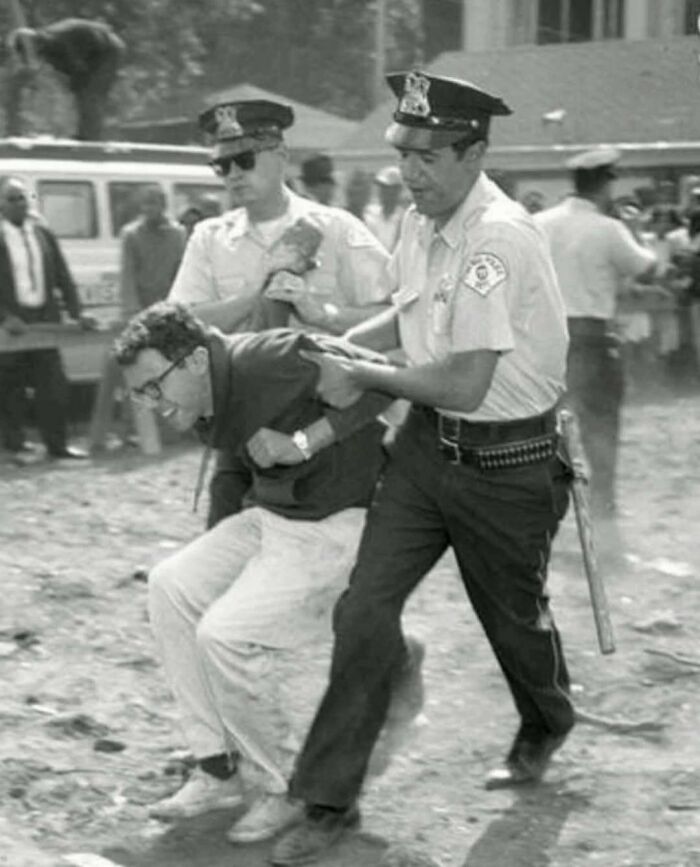
East German soldier helps a little boy sneak across the Berlin Wall the day it was erected in 1961. The boy had been left behind in the chaos of people fleeing to be with their families on either side of the wall.
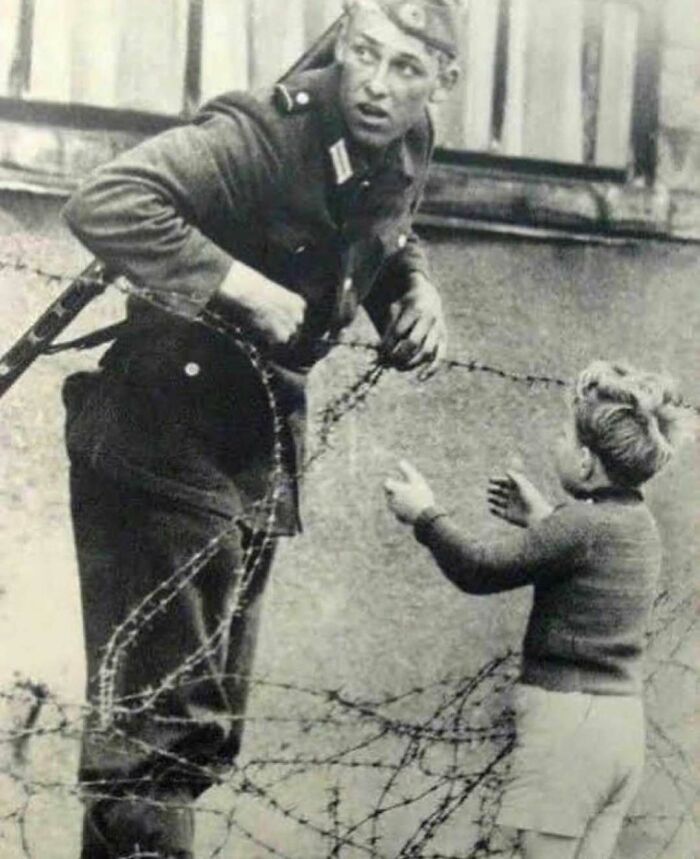
Historian Liz Covart explains thathistoryisn’t just about what happened but how we interpret it as well. “The past happened, but history is made,” Liz says. “Every generation makes its own history. Each generation attempts to understand who they are and how their present-day world came to be.“For thisgenerationof Americans, it might be the reconciling with its history of racism. “Many of us want to understand how American society still experiences racism and racial inequalities and inequities. The past holds answers for us,” Covart suggests.“Developing a better understanding of slavery, the way slavery informedracistideas, and how Americans in the past valued enslaved bodies – both as a type of economic savings account and as less than human – goes a long way to helping us understand why so many people in the United States think and treat people of color negatively.”
Historian Liz Covart explains thathistoryisn’t just about what happened but how we interpret it as well. “The past happened, but history is made,” Liz says. “Every generation makes its own history. Each generation attempts to understand who they are and how their present-day world came to be.”
For thisgenerationof Americans, it might be the reconciling with its history of racism. “Many of us want to understand how American society still experiences racism and racial inequalities and inequities. The past holds answers for us,” Covart suggests.
“Developing a better understanding of slavery, the way slavery informedracistideas, and how Americans in the past valued enslaved bodies – both as a type of economic savings account and as less than human – goes a long way to helping us understand why so many people in the United States think and treat people of color negatively.”
Leonard Matlovich was a decorated Vietnam War veteran with a Purple Heart and a Bronze Star. He was also the first gay American service member to purposely out himself to the military in order to fight their ban on gay people. However, despite his impeccable record, the United States Air Force discharged him after he came out to his officers. Undeterred, Matlovich became a fierce advocate for the rights of the LGBTQ community. In 1975, he was featured on the cover of “TIME” magazine, making him a symbol for gay service members and gay Americans as a whole. When Matlovich passed away in 1988 from HIV/AIDS complications, his headstone was inscribed with the following words: “When I was in the military, they gave me a medal for killing two men and a


One of the two remaining northern white rhinos in the world, guarded 24 hours a day
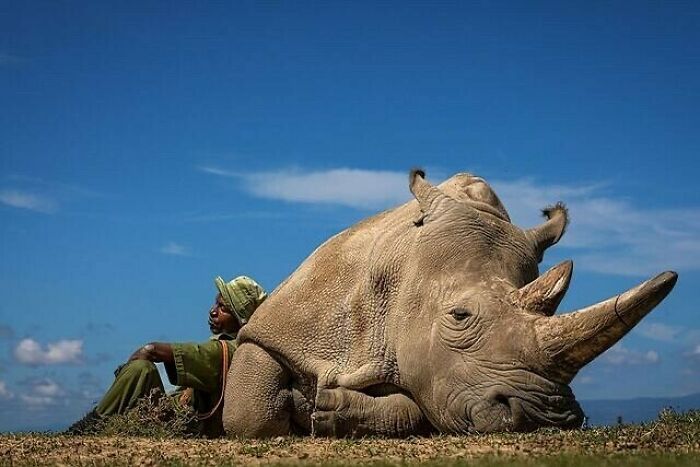
Covart says that history almost always comes with a bias. “This history may not seem so obvious to many because each generation uses the history it creates to portray itself in a good light. There is a saying that a good history book will tell you just as much about thehistorythe historian researched as it does about the time period [in which] the historian wrote it.”
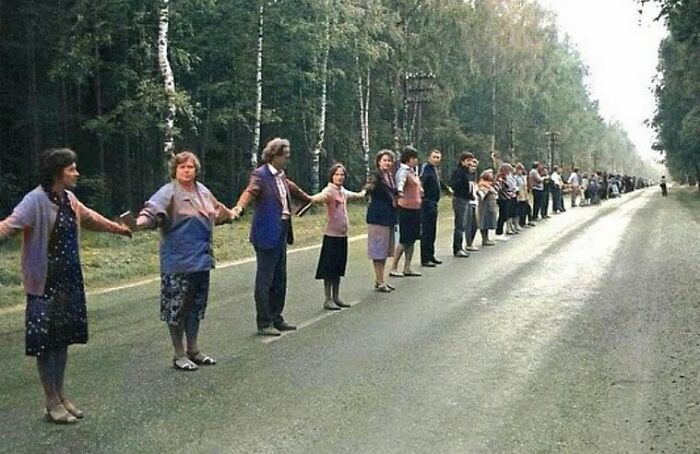
In 1964 a group of high school kids skipped class to go see the Beatles. They didn’t get into the concert but while they were driving Ringo pulled beside them & snapped their picture. When they told their friends no one believed them. Fast forward 50 years & Ringo publishes a book of his photographs. They were in it. They reposed the shot as they look today.



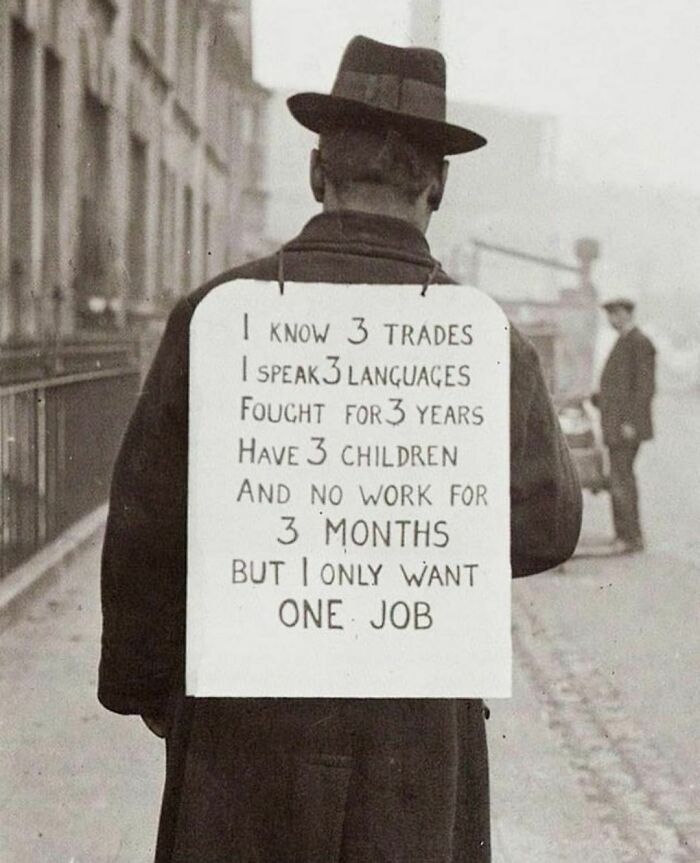
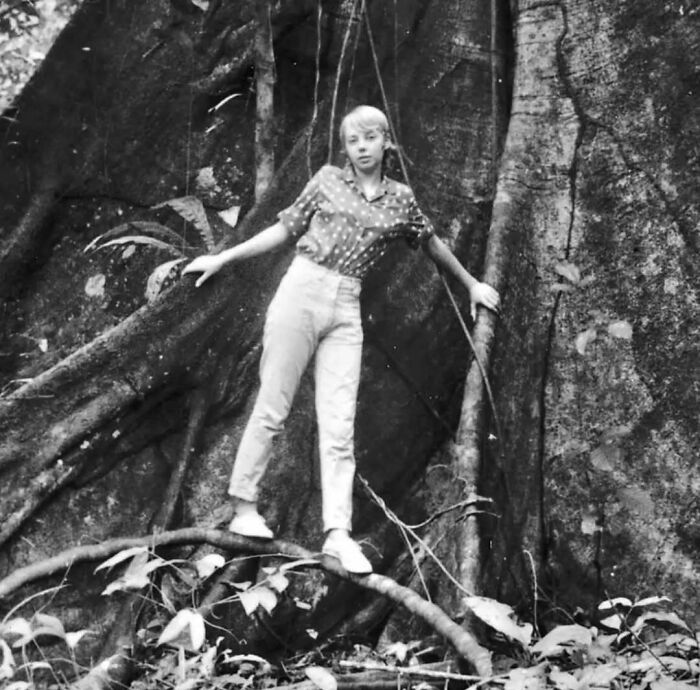
“In the early United States, David Ramsay and Mercy Otis Warren were the first historians to write about the history and origins of the United States,” Covart begins. “They told a story about how the 13 British American colonies on the North American East Coast banded together despite their regional, cultural, and economic differences to form a union capable of besting the best military in the world (the British Army) and securing the independence of the United States.” They did, however, leave out a lot of “events and troublesome episodes.”
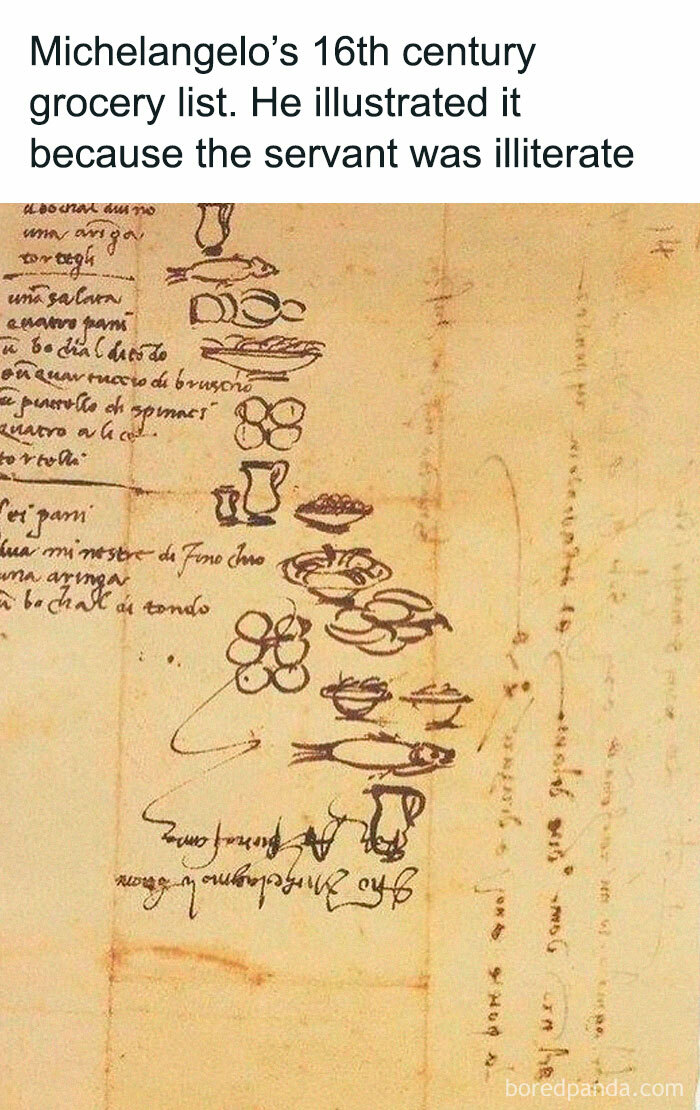


“Their aim in writing their histories was to unite a disparate group of 13 states into a national union with a shared past and culture,” Covart explains. “They wrote their histories during what historians call the ‘Critical Period,’ the time after the United States achieved its independence but before it adopted the United States Constitution in 1789.”

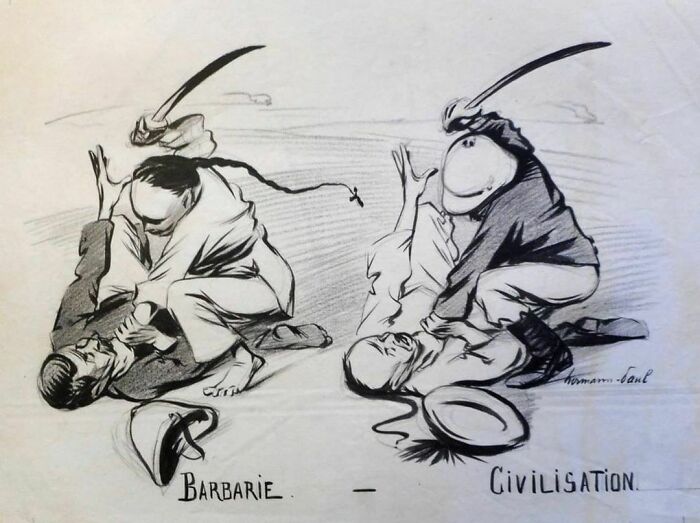
It’s nice to know that over 145 years ago people were taking silly pictures of their pets, 1875
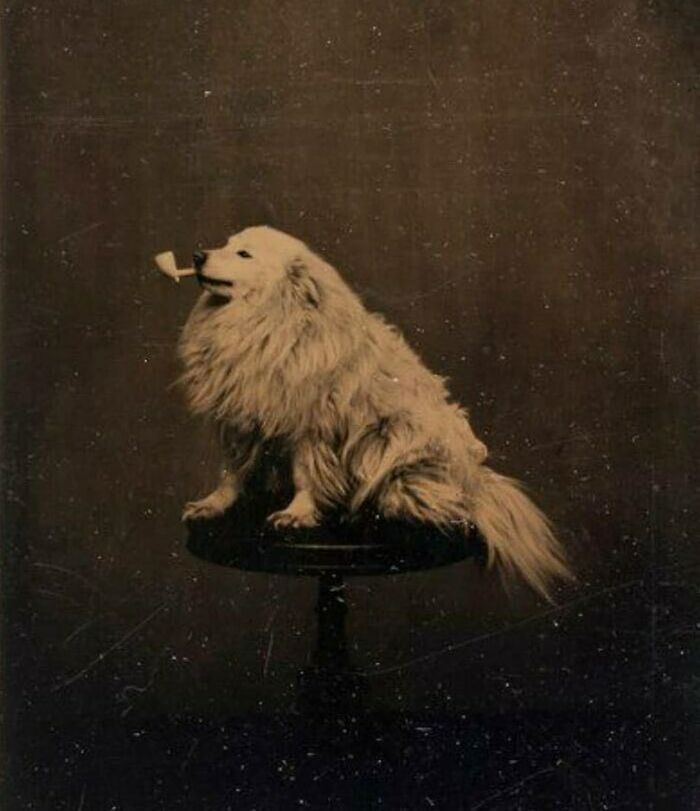
“During this period, Americans experienced economic, social, and political turmoil. The mob actions that these historians had praised for uniting Americans and causing the American War for Independence looked different and more negative when they took place after independence as they did during the Shays' Rebellion,” Covart continues.


It can get as low as -40c in Finland during the winter. The trees get covered in so much snow on frost, it ends up looking like a landscape on another planet.

“The discord and squabbling between Americans from different states threatened to end the United States before it began,” Covart adds. “So, Ramsay and Warren wrote histories of the Revolution that showed more unity among the American people than actually existed. They omitted details and lessened the discord between revolutionaries, Loyalists, and the disaffected who fought a bloody civil war against each other.”

A 1,500-year-old Bible known as the Gospel of Barnabas challenges Jesus Christ’s crucifixion, suggesting it was Judas who was crucified. This ancient text recently emerged in Turkey’s Ethnography Museum, causing controversy, especially within the Vatican. The book, hidden since its discovery in 2000, offers an alternative account of Jesus' life, portraying him as a Prophet, not the Son of God, and questioning Apostle Paul’s authenticity. Its authenticity remains debated, but it could have significant implications for Christian teachings, prompting thought-provoking questions and encouraging further exploration of religious history.

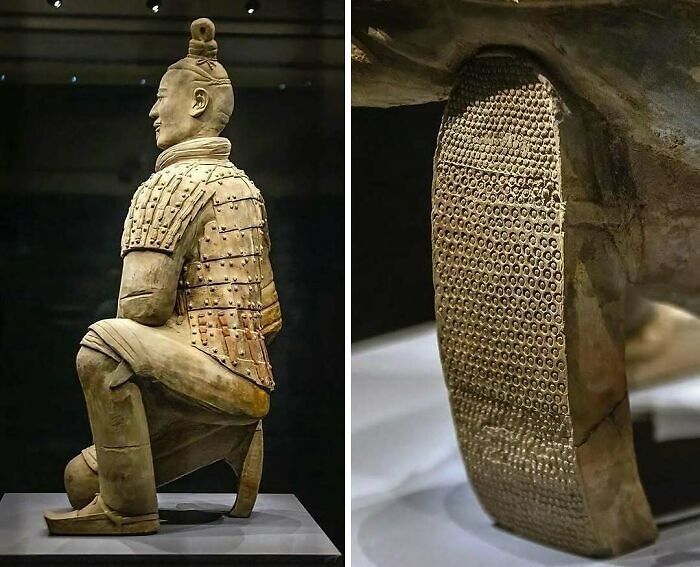
Covart explains that these histories of “one united America” impacted how we understand the American past today. “Rather than starting our story of early America with Indigenous peoples and cultures, or with Spanish, French, or Dutch colonists, we begin our history with the last group of North American settler-colonists: the English,” she says. “We then focus on how English, later British, experiences ‘united’ the American people and informed the American Revolution.”
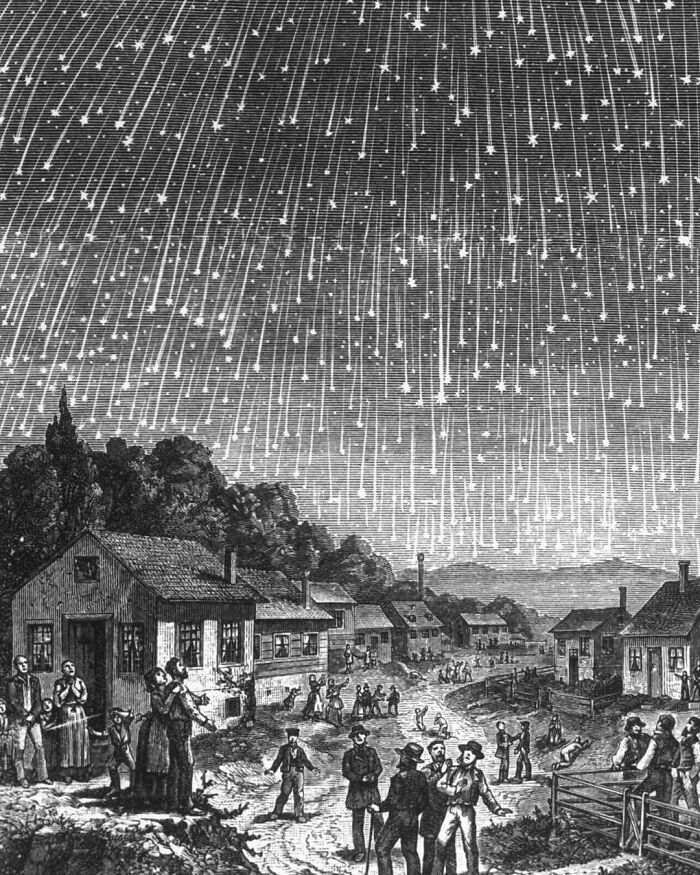
In 1971, a cement truck crashed near Winganon, Oklahoma. The mixer was too heavy to move so they left it. The locals have since repainted it to look like a NASA space capsule.


“Past generations have framed our national story so that it can only begin with events that led to the creation of the United States,” Covart observes. The contributions from the Indigenous communities and African cultures then get lost.
András Arató is a Hungarian internet celebrity who has gained global fame as one of the most beloved memes, thanks to his iconic “Hide the Pain Harold” expression. He shared a photo of himself from his time in the military, which demonstrates that he was “hiding the pain” long before becoming a meme. Arató posted a black-and-white picture of his younger self on his Facebook page, dating back to his service in the Hungarian army. If internet memes had existed during his military days, he might have achieved international popularity much earlier, as his distinctive facial features were already present.

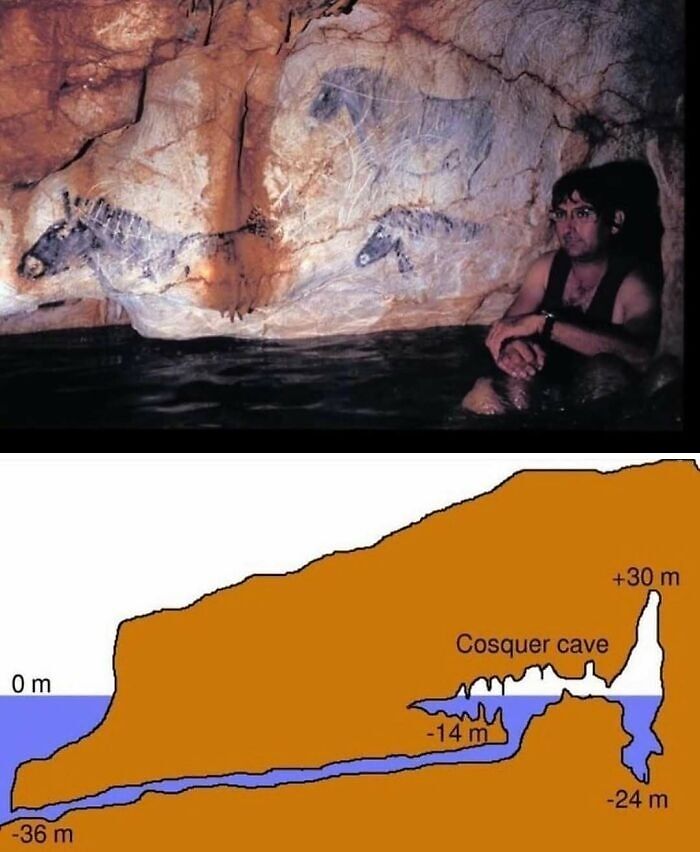
It is believed that the Terracotta Army, referring to the soldiers guarding the tomb of Qin Shi Huang, looked like this when they were first crafted around 2200 years ago.
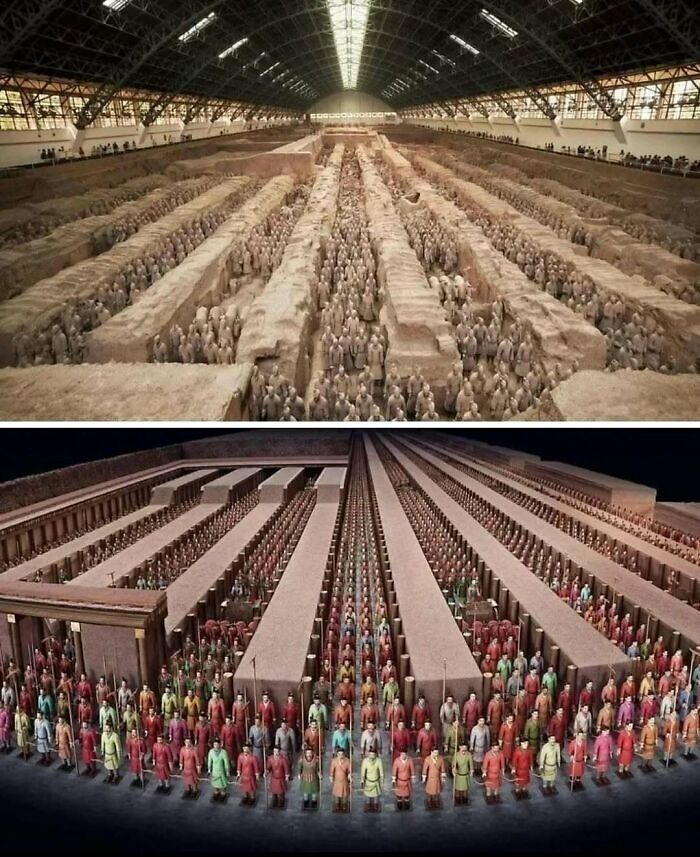
“The framing also omits how Great Britain skirts over this period of British American history in its own history textbooks and how it refers to the War for American Independence as the War of American Rebellion,” Covart also points out. “Historians are doing a lot of work to uncover and bring back these crucial histories to our understanding of the early American past,” she adds.You can hear about some of this work onBen Franklin’s World,a podcast about early American history that features known and unknown parts of history.
“The framing also omits how Great Britain skirts over this period of British American history in its own history textbooks and how it refers to the War for American Independence as the War of American Rebellion,” Covart also points out. “Historians are doing a lot of work to uncover and bring back these crucial histories to our understanding of the early American past,” she adds.
You can hear about some of this work onBen Franklin’s World,a podcast about early American history that features known and unknown parts of history.
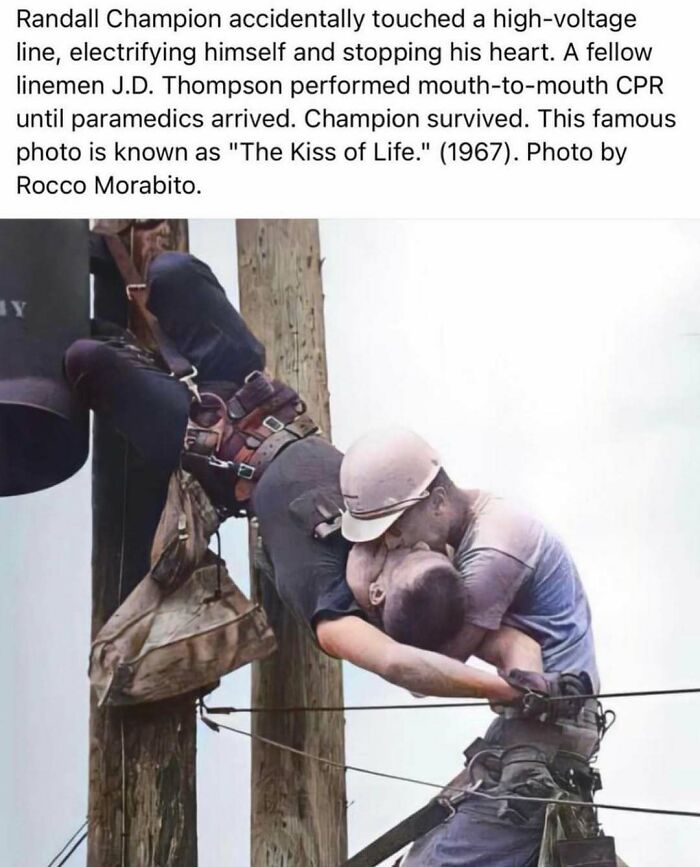
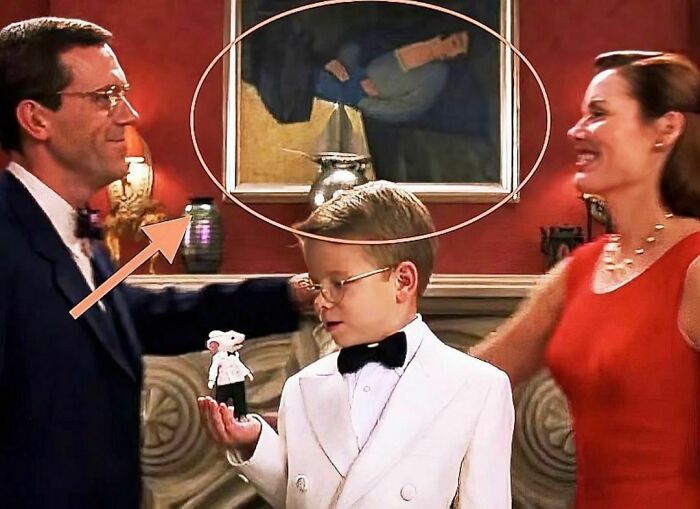
In 1948, a man wore 30lb, 3 toed lead shoes & stomped around a Florida beach at night. The footprints lead people to believe that a 15 ft tall penguin was roaming around. He kept up the prank for 10 years, visiting various beaches. The hoax wasn’t revealed until 40 years later.
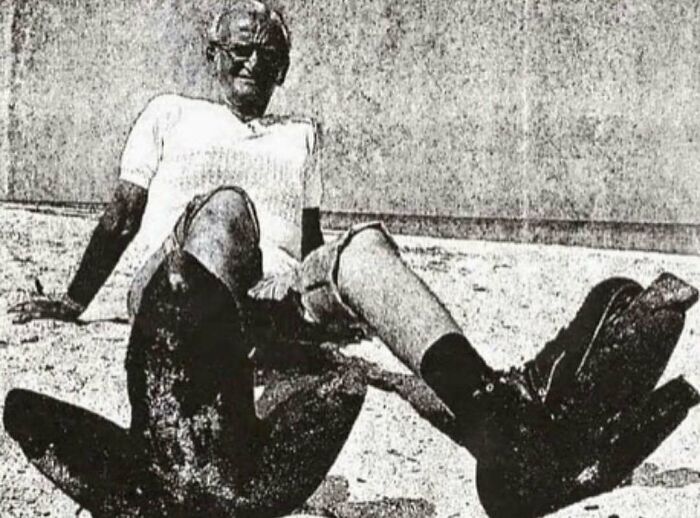
An open air school in the Netherlands. In the beginning of the 20th century a movement towards open air schools took place in Europe with classes taught in nature, so that students would benefit physically and mentally from clean air and sunlight.
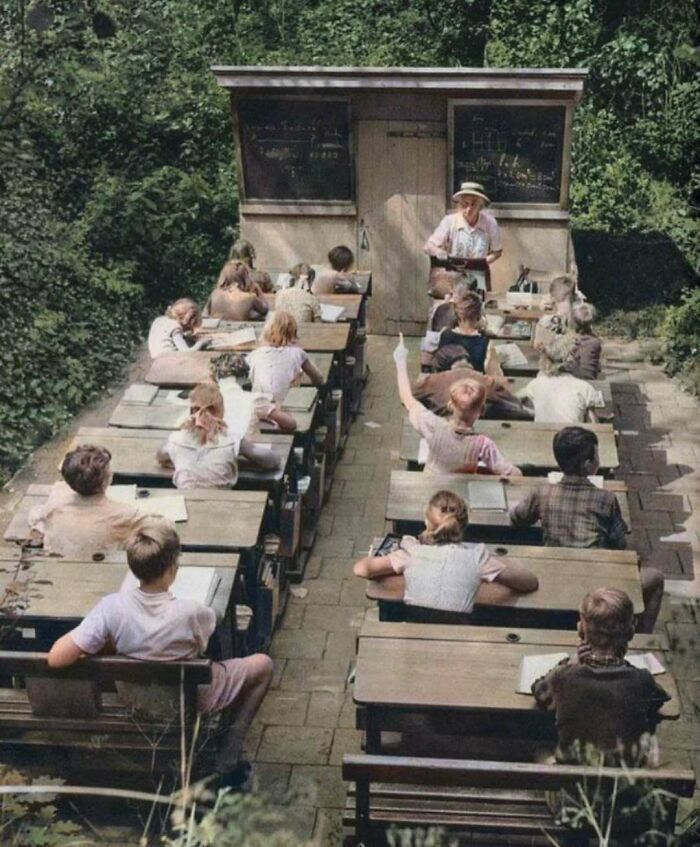
The fossil skulls of Pleistocene dwarf elephants scattered throughout the coastal caves in Italy and the Greek islands most likely inspired the one-eyed Cyclopes in ancient Greek mythology. During the Pleistocene ice age (2,580,000 to 11,700 years ago), land bridges emerged, allowing ancient elephants to move to emerging islands to escape predators and/or find new food sources. As sea levels rose around the Mediterranean, these ancient elephants became trapped and had to compete for limited food, leading to the island rule, where mammals tend to shrink or grow depending on resource availability in their environment. The isolated ancient elephants evolved into different species depending on the island they found themselves on. Those on Cyprus were approximately 6 feet tall, nearly double the size of the ones found on Sicily and Malta. Humans arrived on the islands around 11,000 years ago, leading to the over-hunting and extinction of the ancient elephants within a century. By the time the Romans and Greeks came to occupy the Mediterranean islands, all that remained were skulls twice the size of those belonging to humans, and these massive skulls had a single hole in the center, which the Greeks and Romans mistakenly believed was an eye socket. In fact, it was a socket connected to the trunk of an ancient elephant.
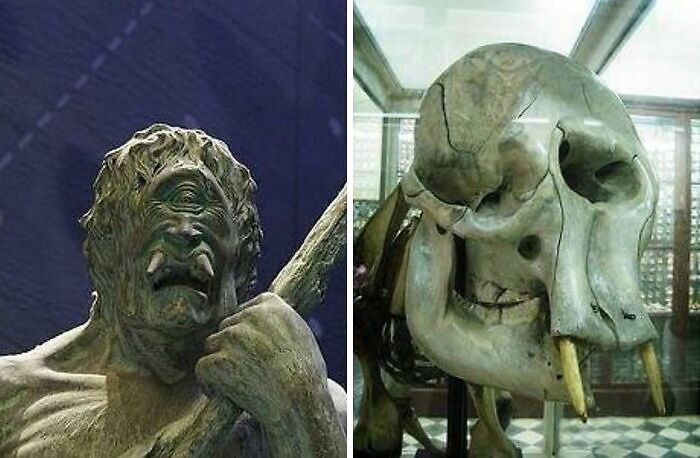
U.S soldier shakes hand with a dog in Luxembourg during the Battle of Bulge, 1944.
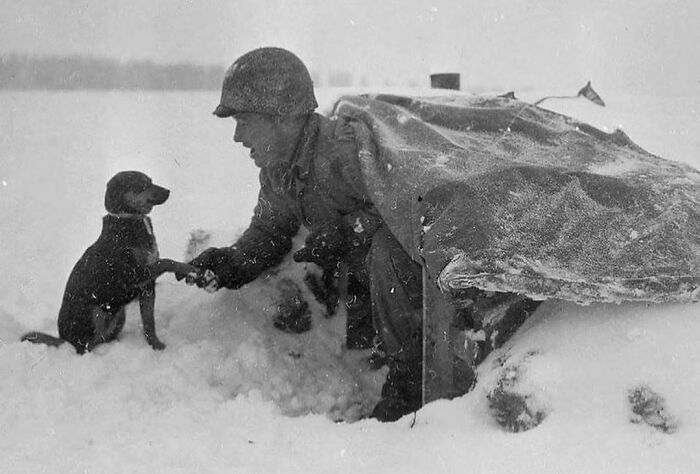
Two young men hold a pre-printed sign, approximately 120 years ago, proclaiming their bond and willingness to be legally wed to one another.
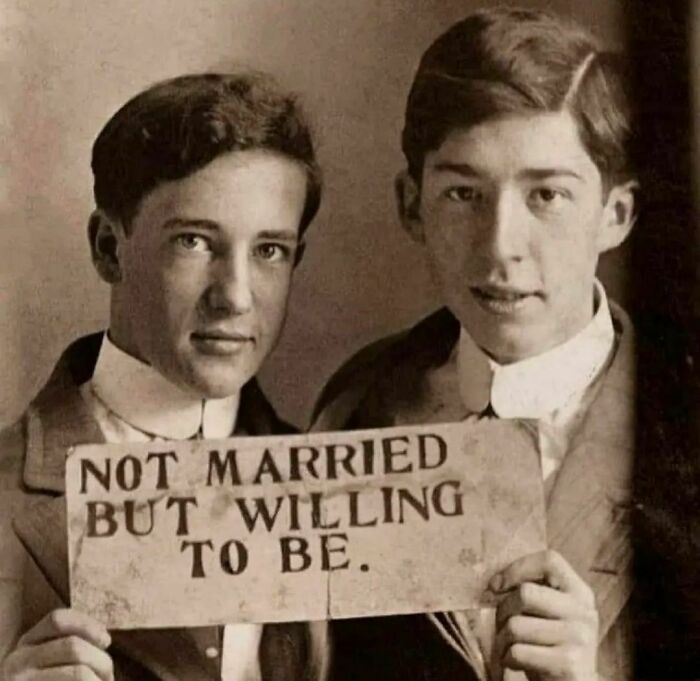
American Civil War soldier clowning around for the camera, ca. 1863
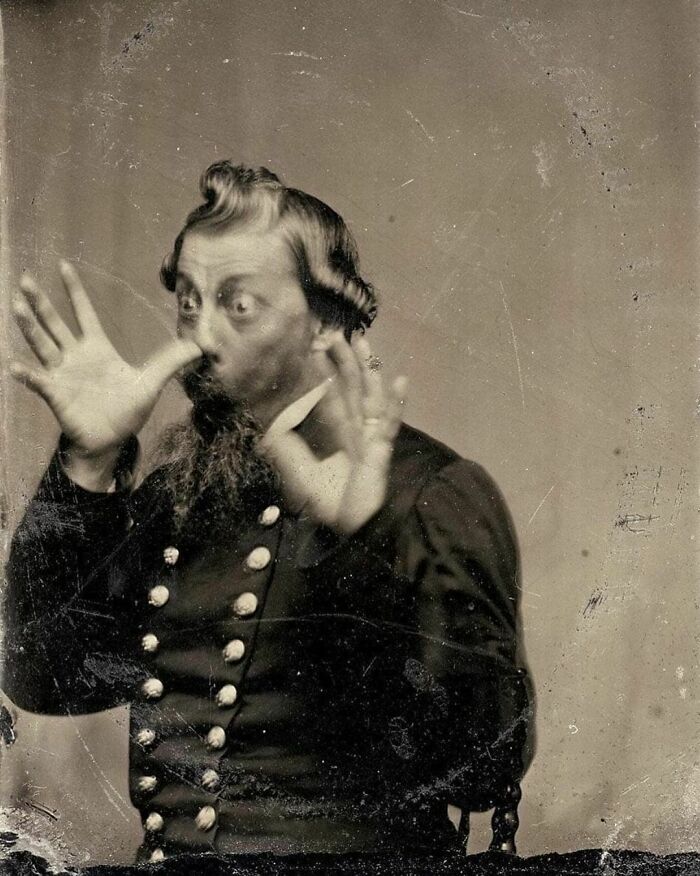
Two childhood friends meet during a protest. One is a factory worker, the other is a riot officer. Guy Burmieux and Jean-Yvon Antignac were childhood friends but they chose different paths in life. On April 6, 1972 in Brittany, France, Guy was part of a protest to get better working conditions. Jean-Yvon and other riot officers were called in to quell the protestors.
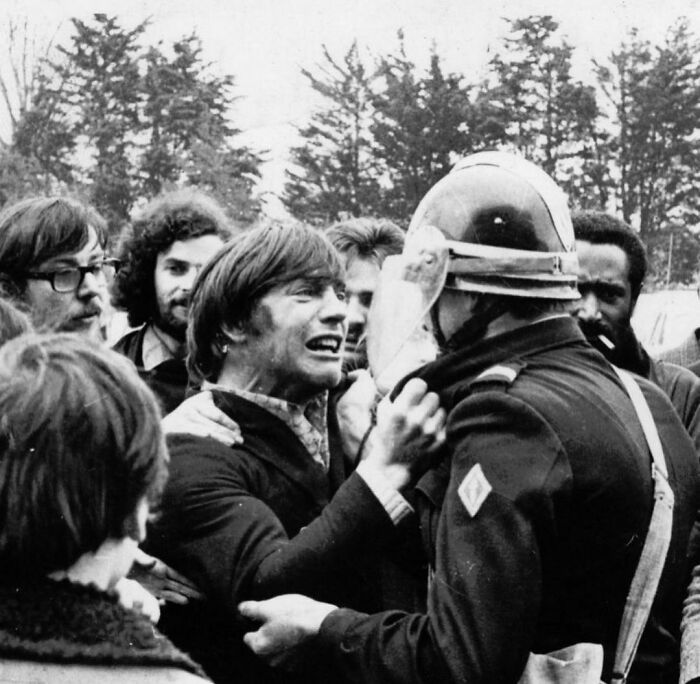
Take a look at the ingredients of a cough syrup manufactured in Baltimore back in 1888

See Also on Bored Panda
The same trench from WW1, 100 years apart, 1914-2014
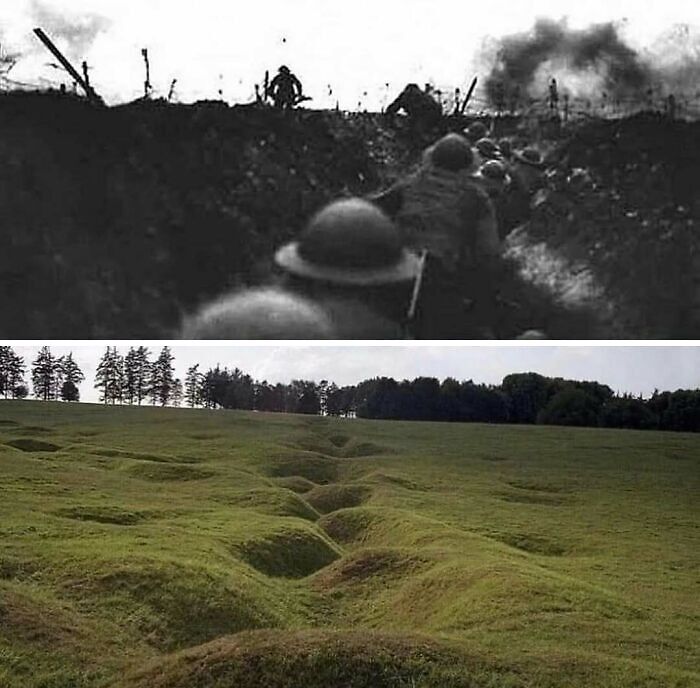
Ducklings as Integral Medical Companions in 1956 In 1956, an unconventional approach to medical treatment emerged, utilizing ducklings as an integral part of therapy. This unique method aimed to provide emotional support to patients during their recovery. Let’s delve into this intriguing story further. Hospitals and clinics in the mid-1950s introduced ducklings into various departments, particularly for children and individuals experiencing emotional distress. The presence of these endearing creatures brought joy, reduced anxiety, and fostered companionship, positively impacting patients' emotional well-being. Ducklings proved to be effective companions, creating a welcoming and uplifting atmosphere within medical facilities. Children, in particular, formed deep emotional connections, finding solace in their presence. This therapy gained popularity worldwide during the 1950s, but as evidence-based practices emerged, traditional therapies took precedence, leading to the decline of duckling therapy. The use of ducklings as integral companions in medical treatment in 1956 marked an unusual but captivating chapter in medical history. Although this approach may seem unconventional today, it highlights the importance of emotional well-being in the healing process. While duckling therapy faded with time, its legacy reminds us to continually seek innovative and compassionate methods to enhance the medical experience for patients.
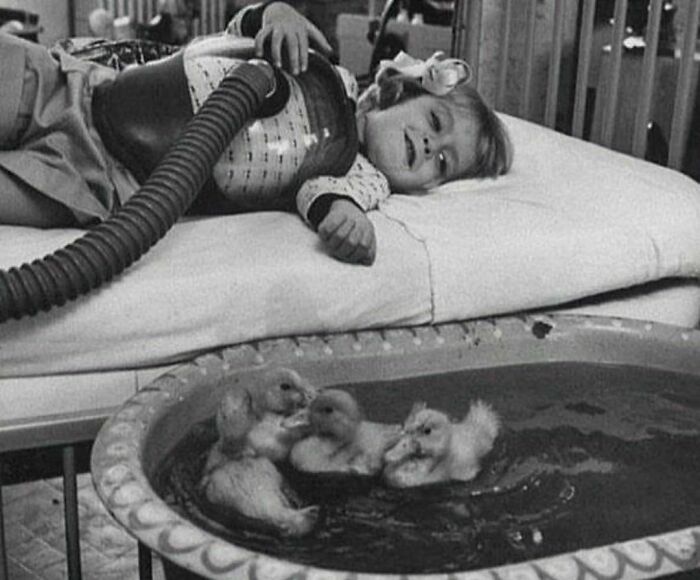
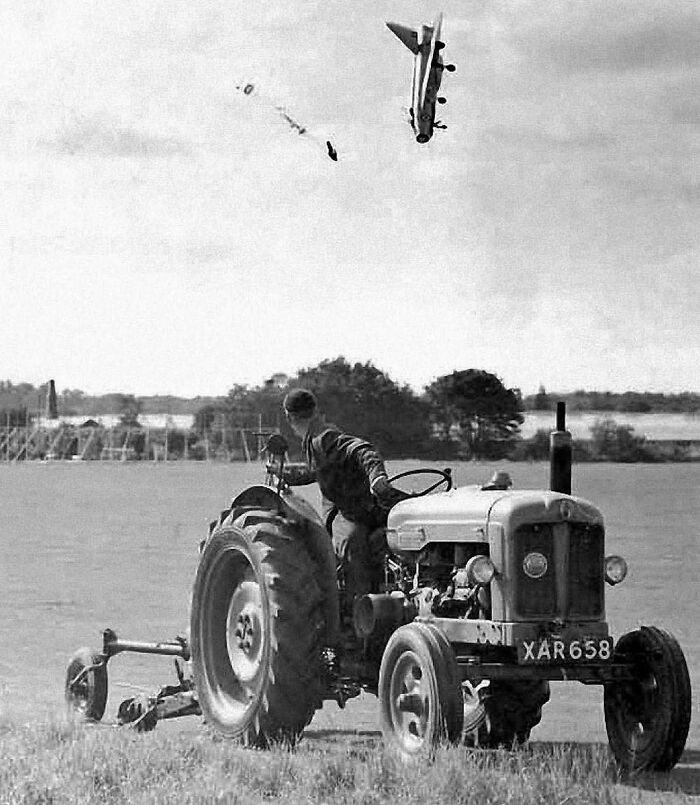
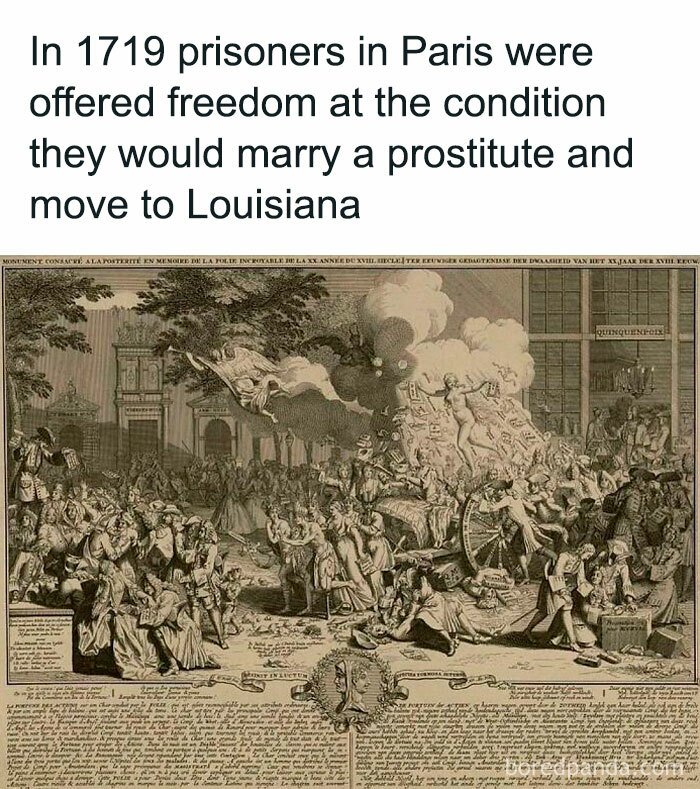
In 1987 an estimated 800,000 people flocked to the the Golden Gate Bridge for its 50th anniversary. The weight of the large crowd caused the bridge to sag 7 feet, flattening its usual convex shape. Engineer Daniel E. Mohn reaffirmed the bridge was not overstressed as a result of Bridgewalk ‘87.



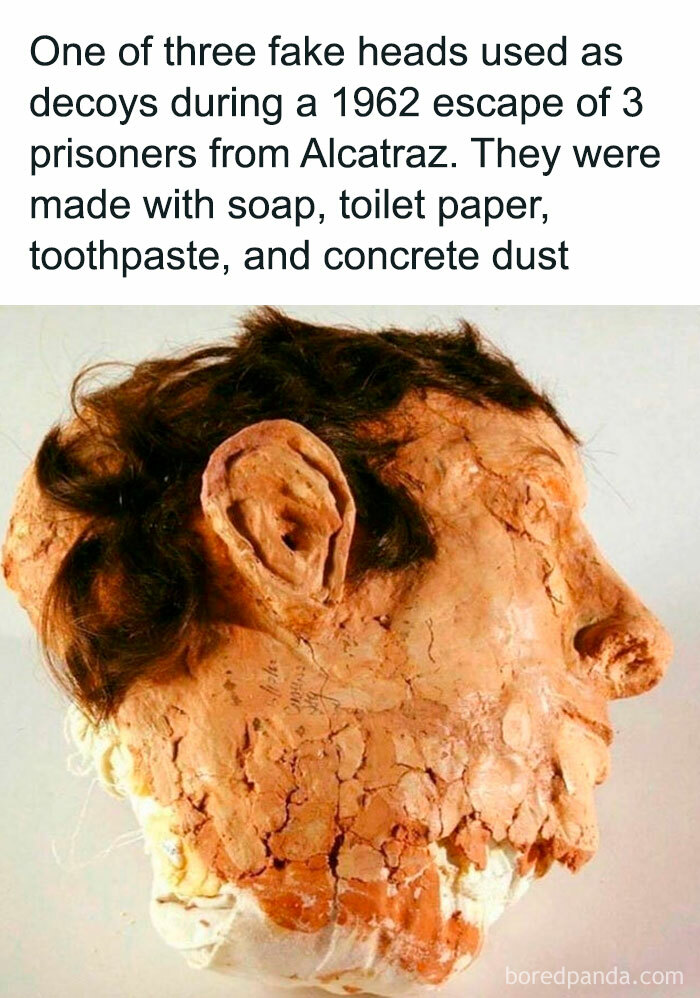
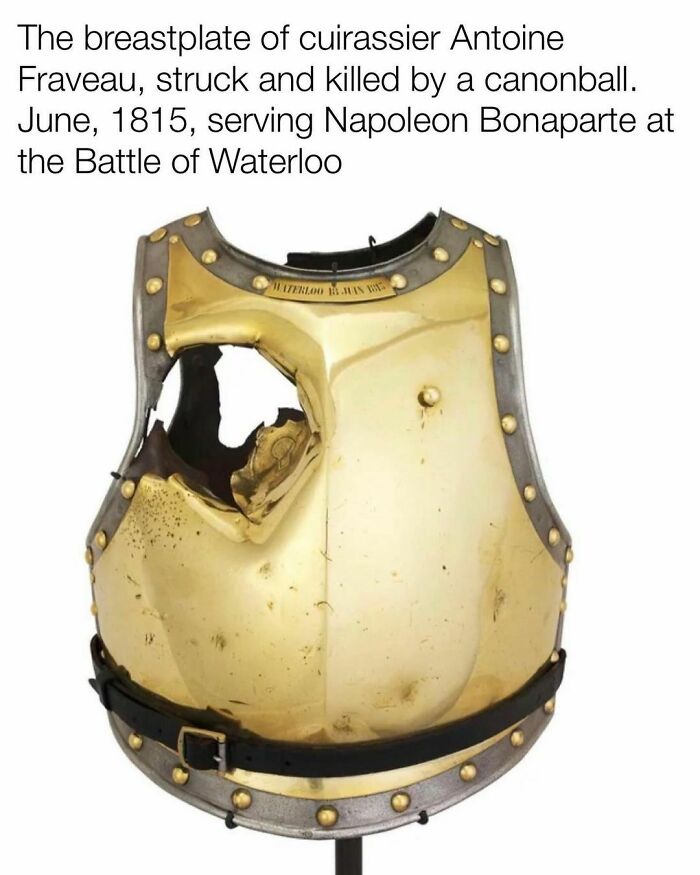
International Posture Queen, 1957. The young woman with the straightest spine and the most perfect poise and personality would win. Contestants were given X-rays to determine whose spine was the straightest. Crooked spines were grounds for elimination.
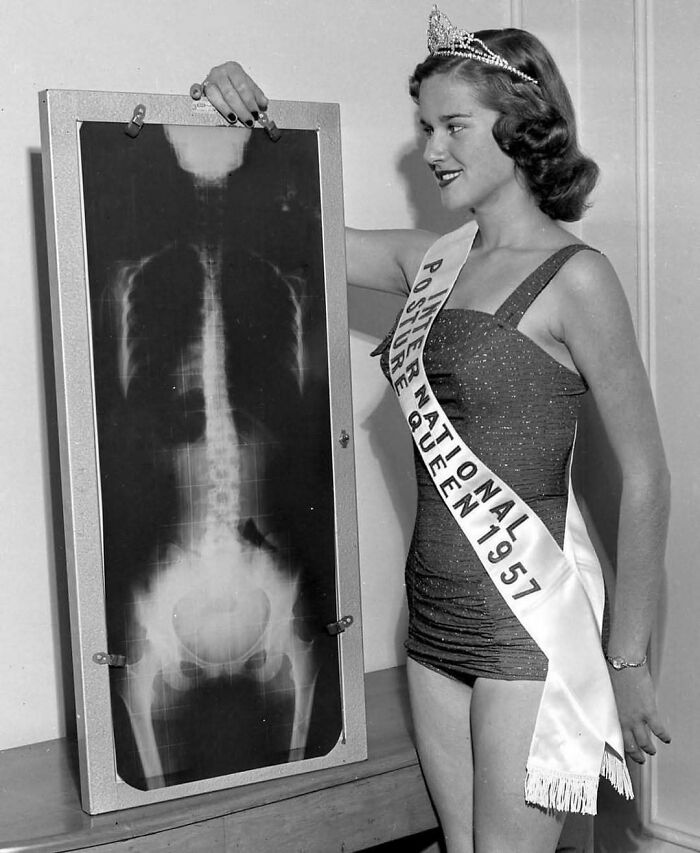
Continue reading with Bored Panda PremiumUnlimited contentAd-free browsingDark modeSubscribe nowAlready a subscriber?Sign In
Continue reading with Bored Panda Premium
Unlimited contentAd-free browsingDark mode
Unlimited content
Ad-free browsing
Dark mode
Subscribe nowAlready a subscriber?Sign In
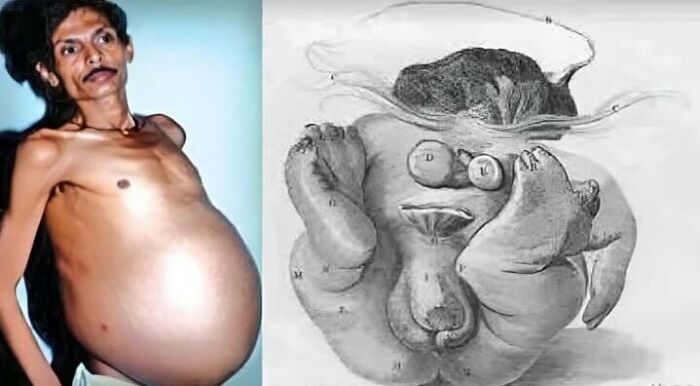


Victorian poverty, 1900. Annie, seven, and one year old Nellie, sit on a sacking outside their house in London. They were among ten children born to single mother Annie Daniels. Five of their siblings died in childhood.
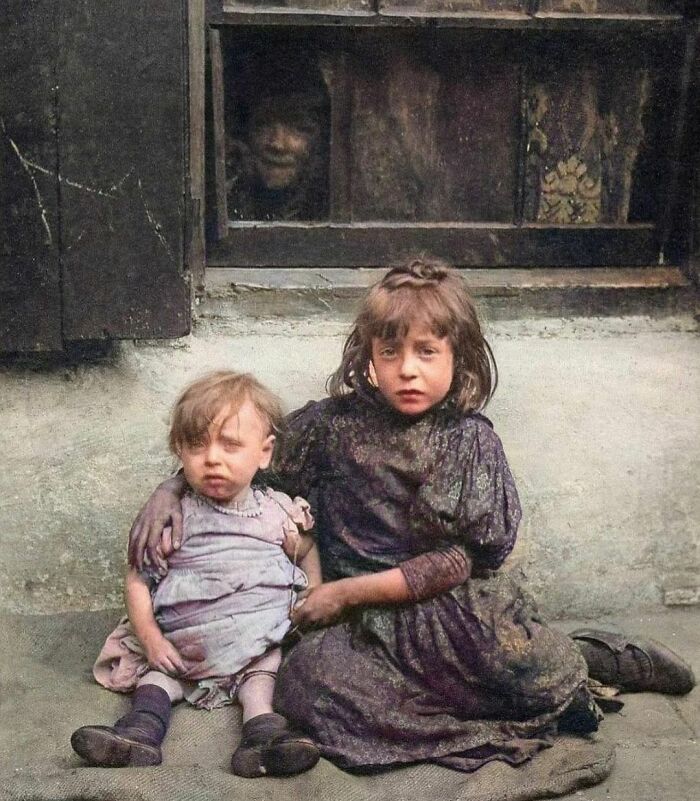
While drinking, a Pilot bet he could land outside the bar, 2 hours later he touched down in central New York in a stolen aircraft. Years later he repeated the stunt because someone wouldn’t believe him. In September 1956 after drinking heavily at a bar in New York City, Thomas Fitzpatrick made an intoxicated barroom bet that he could travel from New Jersey to New York City in 15 minutes. At 3 a.m. he stole a single-engine plane from the Teterboro and flew without any lights or radio before landing on St. Nicholas Avenue near 191st Street in front of the bar where the bet was made. The New York Times called it a “fine landing” and a “feat of aeronautics”. For his illegal flight, he was fined $100 after the plane’s owner refused to press charges. In October 1958 just before 1 a.m., Fitzpatrick again stole another plane from the same airfield and landed on Amsterdam and 187th after another bar patron disbelieved his first feat. For his second stolen flight, judge John A. Mullen sentenced him to six months in prison. When asked why did had undertaken the 2nd flight Fitzpatrick told the police “he had pulled off the second flight after a bar patron refused to believe he had done the first one” Fitzpatrick was a Marine during the Korean War and received a Purple Heart. He has three sons and was married to his wife, Helen, for 51 years working as a steamfitter. He died in 2009 at the age of 79. Fitzpatrick has a mixed drink named after him for his feat called the “Late Night Flight”
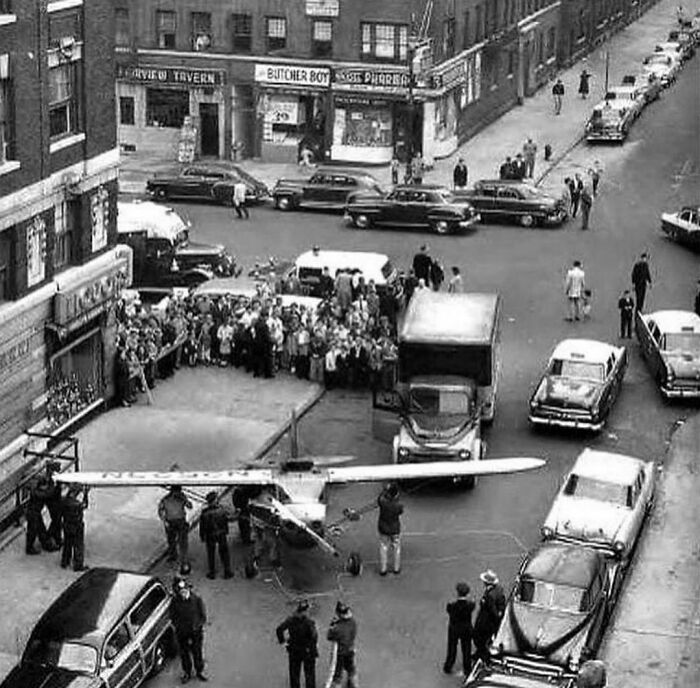
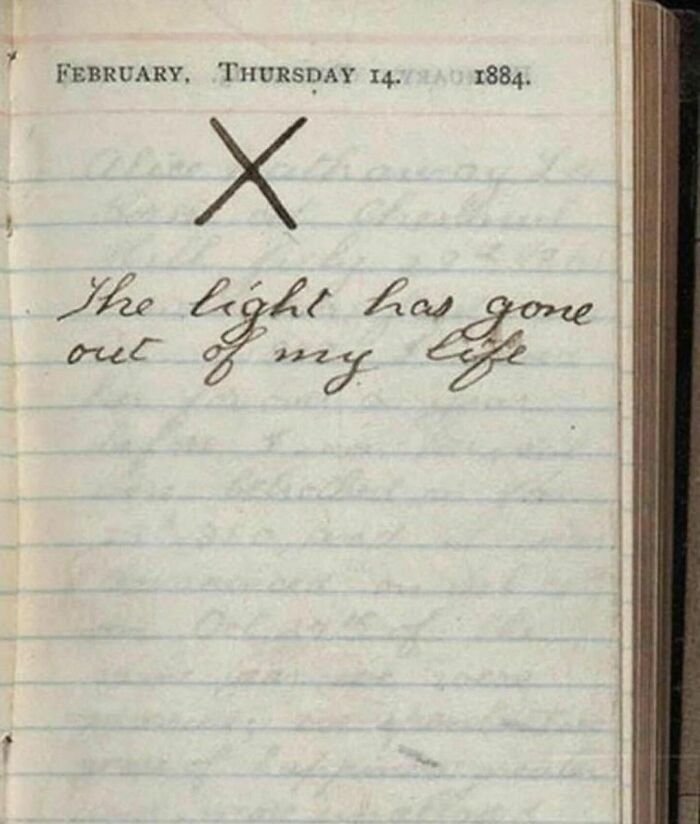

A police officer issuing a woman a ticket for wearing a bikini on an Italian beach, 1957. At the time the bikini was banned from beaches and public places on the French Atlantic coastline, Spain, Italy and Portugal.
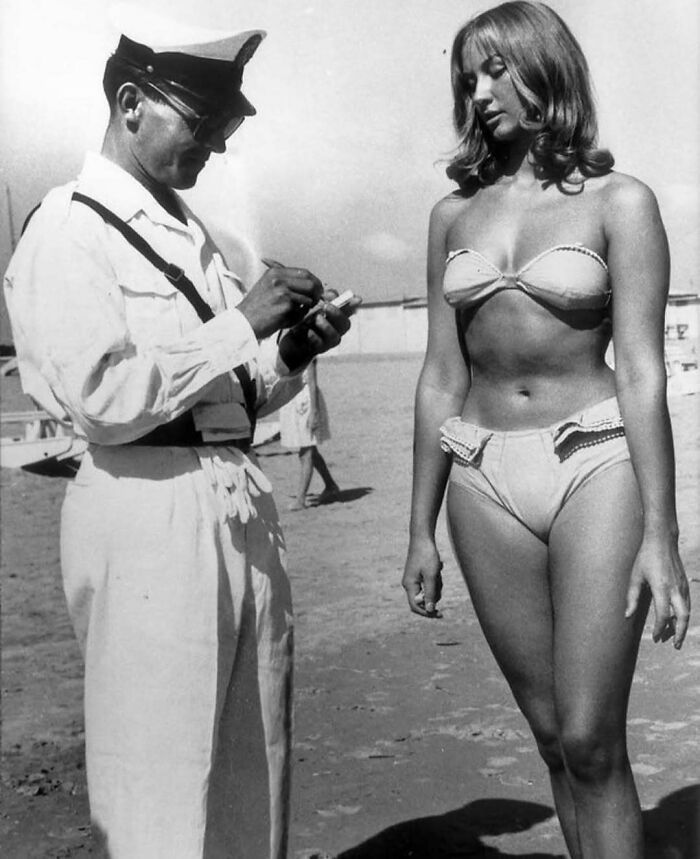

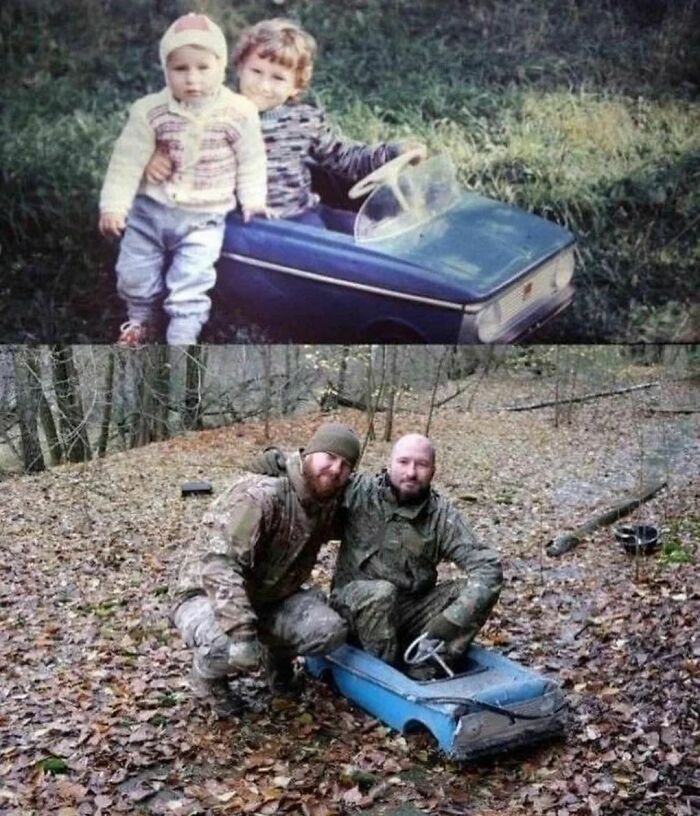
1904 colorized photo of a Navajo man. He is dressed as Tó Neinilii, the rain god of Arizona and New Mexico’s Navajo people. He was said to play tricks, and when dancing wore a mask to play the part of a clown.
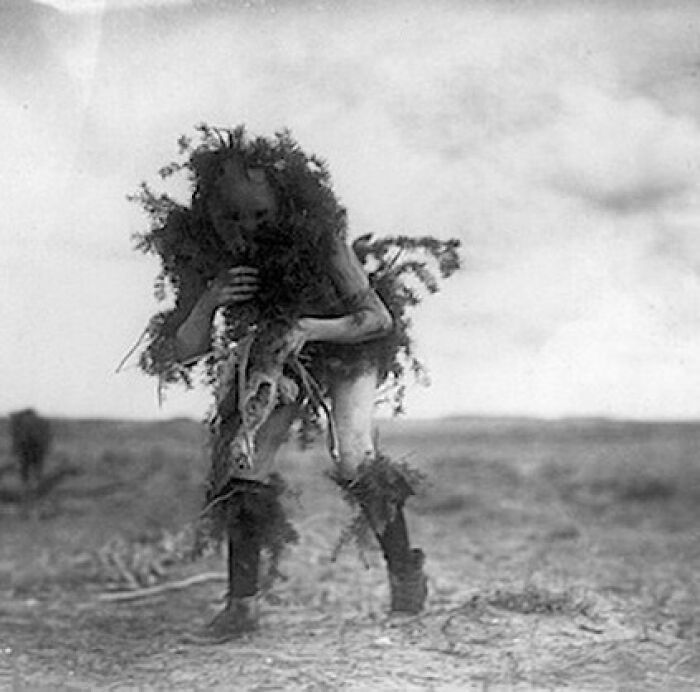
In 1943, Paul Newman enlisted in the Navy, joining the V-12 program to become a pilot. But when he was discovered to be colorblind, he was sent to basic training where he became a rear-seat radioman and gunner for torpedo bombers. In May 1945, his unit was assigned to the aircraft carrier USS Bunker Hill. But the pilot developed an earache and another crew was sent in their place. A few days later kamikaze planes attacked Bunker Hill, k*lling almost 400 onboard. “When you miss something like that because your pilot happened to have an earache..wow!” Paul recalled. “You can’t say God is looking after you because He gave your pilot an earache but put the 15 other guys in coffins!”
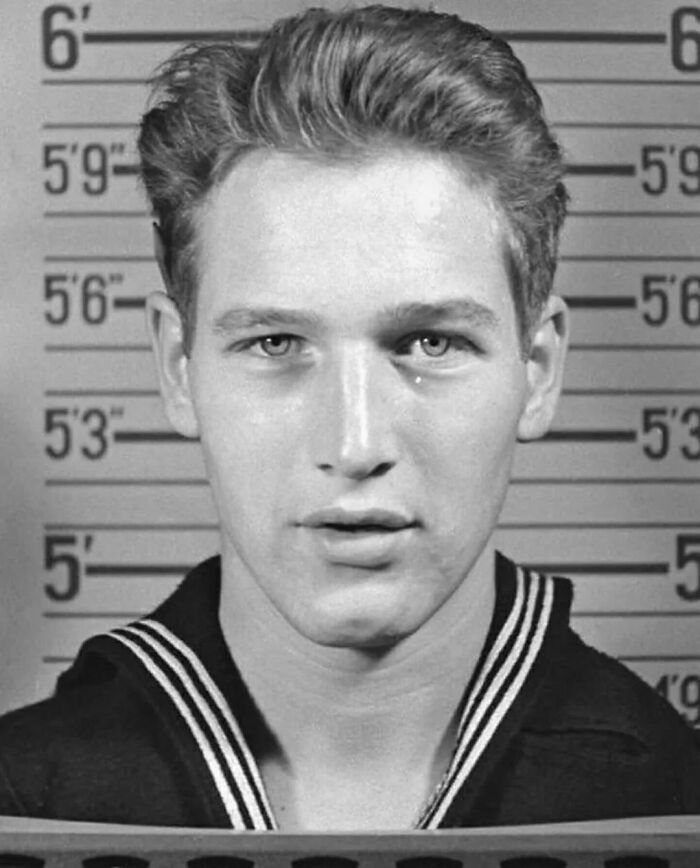
The Schwerer Gustav in 1943, the largest calibre rifled weapon ever used in combat. The fully assembled gun weighed nearly 1,350 tons, and could fire shells weighing 7 tons to a range of 47 km. It was transported using railway.
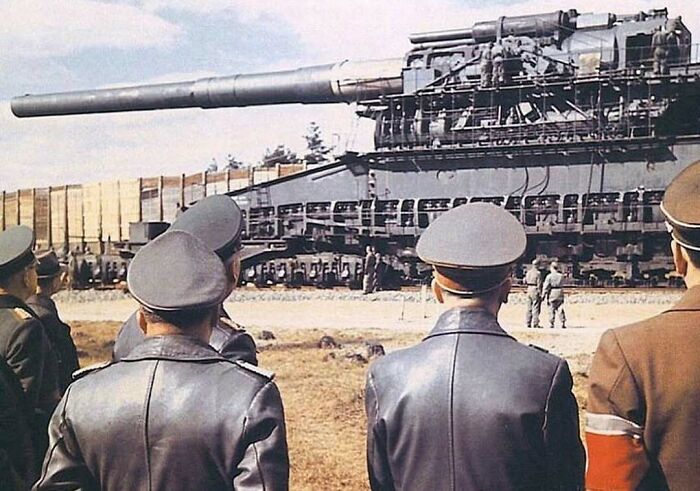
A restaurant in Bangkok has been continuously cooking and serving from the same soup for over 45 years, a form of “perpetual stew.”

During the Prohibition era, a time when the production, sale, and consumption of alcohol were illegal in the United States, moonshiners had to get creative to stay one step ahead of the law. Among their many tricks was the creation of what became known as “heifer-heels.” These were not just any shoes; they were designed with a specific purpose in mind: to leave footprints that looked like those of a cow. Imagine you’re a moonshiner in the 1920s, hauling your homemade liquor through the countryside. You know that the police or federal agents might be on your tail, looking for signs of human activity. So, you slip on these heifer-heels, which are essentially shoes with soles shaped like cow hooves. As you walk, you leave behind a trail that, to the untrained eye, looks like a cow has just wandered through. This wasn’t just about fooling the eyes; it was about playing with the mind. Law enforcement officers, expecting to track humans, might find themselves following what they believe to be a cow’s path, only to realize too late that they’ve been duped. The shoes were crafted with care, often made from materials that would mimic the texture and depth of a real cow’s hoof print, ensuring that the deception was as convincing as possible.
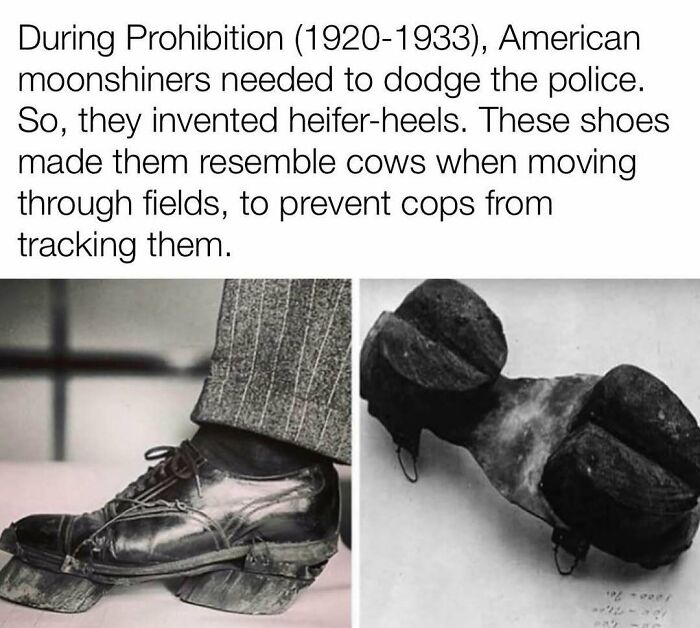


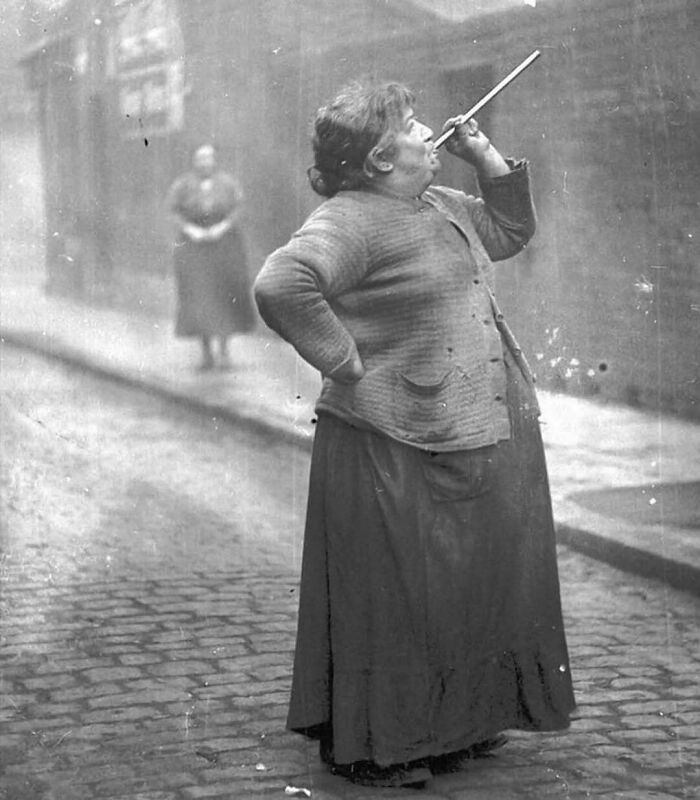
Miss Idaho Potato, 1935 The Miss Idaho Potato pageant is a beloved tradition since 1935, celebrating the beauty and versatility of Idaho’s famous crop. Contestants are judged on poise, personality, and potato knowledge, adding a fun twist to the competition. The winner receives a unique tiara made entirely of potatoes, symbolizing Idaho’s agricultural heritage. This cherished event promotes Idaho potatoes, showcases the state’s agricultural heritage, and fosters camaraderie among potato enthusiasts. The pageant captures the spirit of Idaho, honoring the humble potato and its significance to the state’s identity. It continues to captivate audiences and highlight the beauty of both contestants and Idaho’s remarkable potato industry.

The man who passed away without ever setting eyes on a woman. Born in 1856, Mihailo Tolotos faced a tragic start to his life when his mother passed away a mere four hours after his birth. With no father or other family members coming forward, the young boy found himself abandoned on the steps of a monastery situated atop Mount Athos. Fortunately, the monastery took him in and became his new home. Due to the strict rules in place, Tolotos had limited interaction with the outside world and was never exposed to women, as they were prohibited from entering monasteries or setting foot on the mountain. Although male tourists were permitted, they primarily came to experience the monastic lifestyle or seek a life as monks themselves. Mihailo Tolotos lived his entire life in seclusion, shielded from the external world, and without ever encountering a woman. Eventually, in 1938, at the age of 82, he passed away, having never laid eyes on the appearance of a woman.
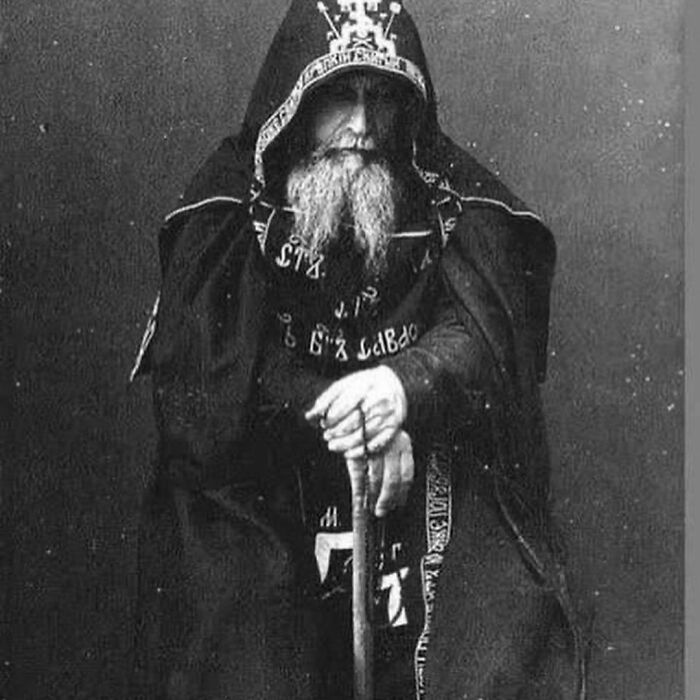
Winter Proofing New Russian babies, Moscow, 1958. They believe that the cold, fresh air boosts their immune system and allows them to sleep longer.
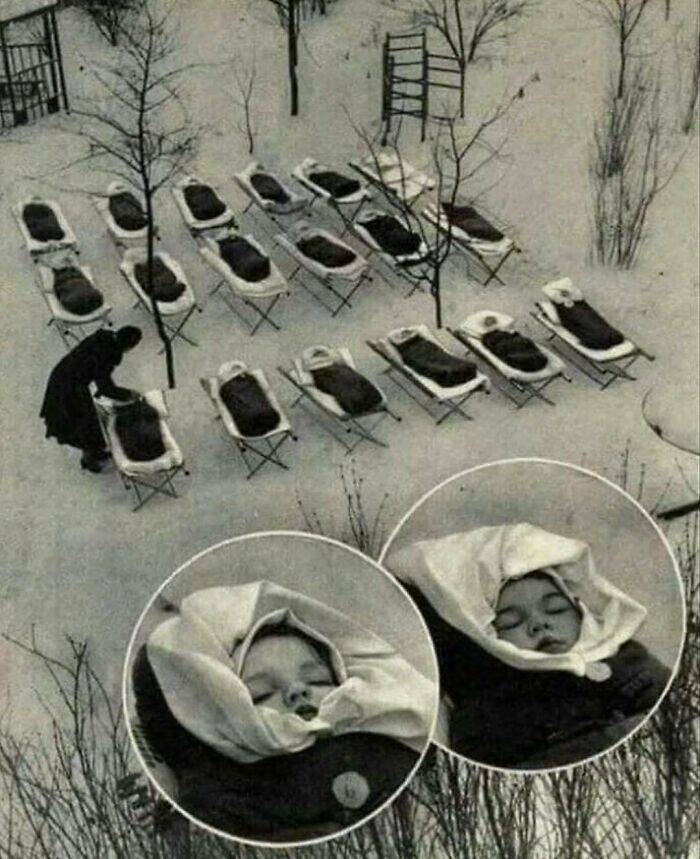
Maurice Tillet, the rumored inspiration behind Shrek, was a Russian-born French professional wrestler known as The French Angel. He achieved success in the 1940s, becoming a World Heavyweight Champion. Diagnosed with Acromegaly at 19, he faced physical challenges but pursued a career in law, acting, and wrestling. Despite early dating experiences, his attitude toward women changed in the 1940s, believing they were interested in his money. Tillet passed away in 1954 from a heart attack upon hearing about his friend’s death.
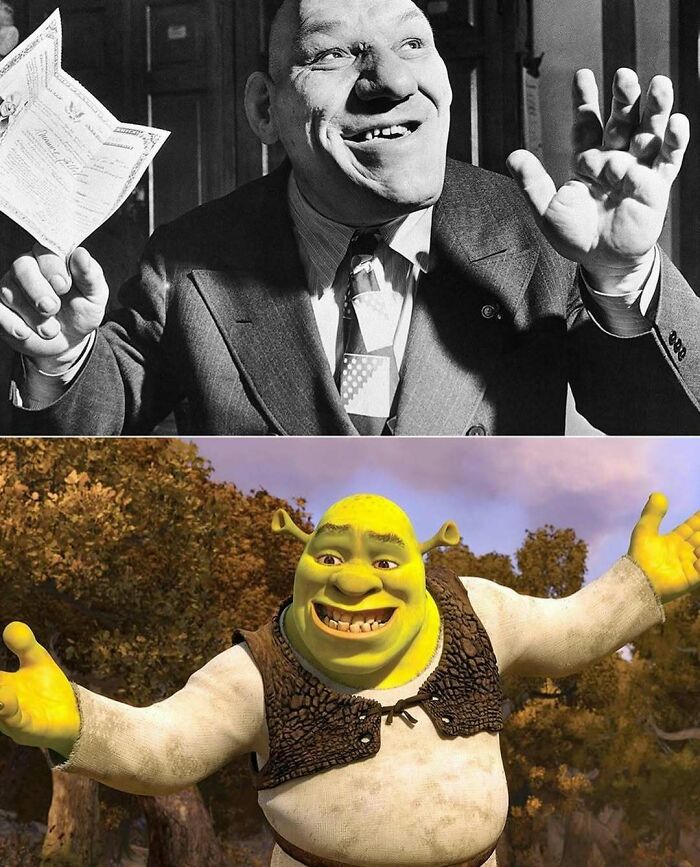

In the late 1990s and early 2000s, LAN parties were a cornerstone of young gamers’ social lives. These gatherings, typically hosted in someone’s basement or a local community center, revolved around connecting multiple computers through a local network. This allowed groups of friends to delve into the world of multiplayer gaming in an era where high-speed internet was still a luxury. Amidst the dim glow of computer screens, young enthusiasts would engage in epic battles in games like Age of Empires and Quake, all while sipping on caffeinated sodas and indulging in a smorgasbord of snacks, from pizza to candy bars. These LAN parties often stretched late into the night, much to the exasperation of concerned parents and the delight of the participants. These gatherings were about more than just gaming; they were about forging lasting friendships, honing teamwork skills, and creating unforgettable memories in an era when online gaming as we know it today was still in its infancy.

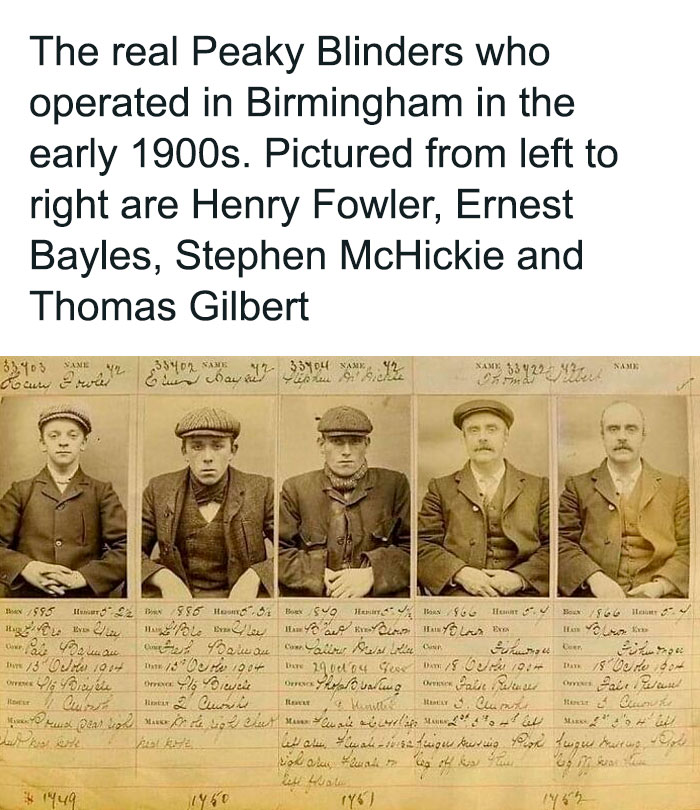

In 1897, there were two notable circus performers known as George Moore, also known as “the living skeleton,” and Fred Howe, nicknamed “the fat man.” Unfortunately, there is a scarcity of information about them during that time period. However, from the limited available sources, here is what I could gather: Fred Howe’s father worked as a carpenter in Pennsylvania, and young Fred initially followed in his footsteps to learn the trade. However, due to his increasing weight, he had to abandon that path. At the age of eighteen, he joined the Forepaugh Circus as a “tat boy” and it was there that he first encountered his future sparring partner. On the other hand, George Moore was born in Helena, Montana. His father owned a small dry goods shop, but George had a strong desire to explore the world beyond his hometown. When a major circus arrived in Helena, the manager offered him an opportunity to showcase himself as the “living skeleton.” Eager to pursue his dreams, George immediately accepted the offer. As fate would have it, Howe and Moore developed a friendship and would engage in private sparring matches for amusement. One day, the circus manager witnessed their impromptu bouts and saw potential in their dynamic. He promptly offered them a longer engagement, with a higher salary, to publicly box each other. According to available information, George Moore stood at an impressive height of 6 feet 3 inches and weighed a mere 97 pounds, while Fred Howe was significantly shorter at 4 feet 2 inches and weighed a staggering 422 pounds.
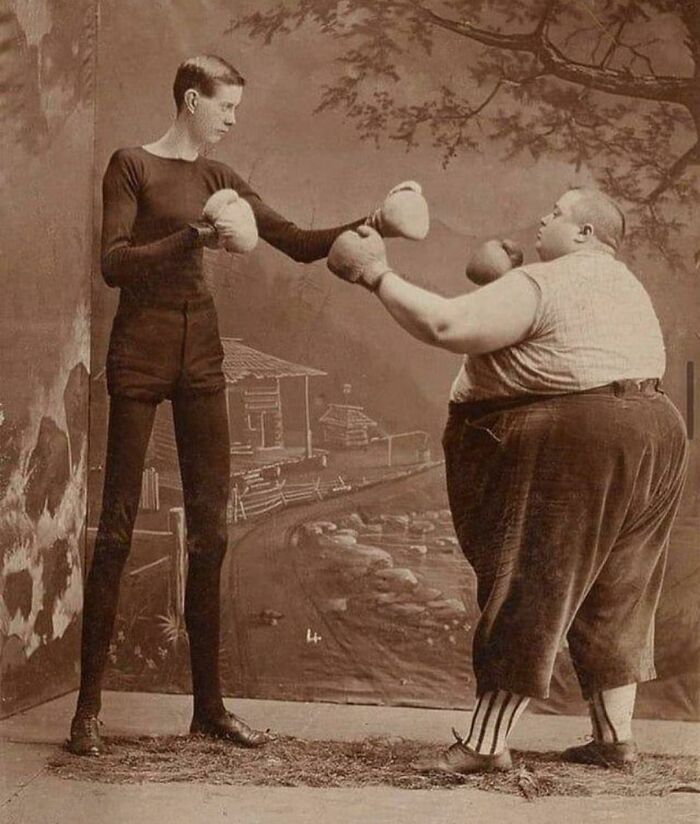
‘World’s Dirtiest Man’ dies in Iran at the age of 94. Amou Haji, who gained notoriety as the ‘world’s dirtiest man,’ has passed away in Iran at the age of 94. Local media reported that Haji, who lived in a cinder block shack, was covered in soot and had not bathed with water or soap for over 60 years. In 2014, the Tehran Times documented Haji’s peculiar habits, which included consuming roadkill, smoking a pipe filled with animal excrement, and holding the belief that cleanliness would make him ill. However, a few months ago, villagers managed to convince him to wash for the first time.
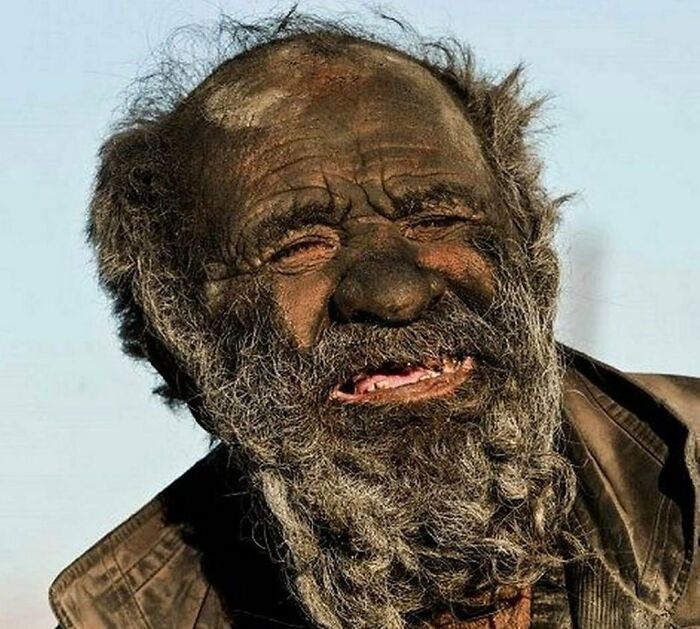
Modal closeAdd New ImageModal closeAdd Your Photo To This ListPlease use high-res photos without watermarksOoops! Your image is too large, maximum file size is 8 MB.Not your original work?Add sourcePublish
Modal close
Add New ImageModal closeAdd Your Photo To This ListPlease use high-res photos without watermarksOoops! Your image is too large, maximum file size is 8 MB.Not your original work?Add sourcePublish
Modal closeAdd Your Photo To This ListPlease use high-res photos without watermarksOoops! Your image is too large, maximum file size is 8 MB.Not your original work?Add sourcePublish
Add Your Photo To This ListPlease use high-res photos without watermarksOoops! Your image is too large, maximum file size is 8 MB.
Add Your Photo To This List
Please use high-res photos without watermarks
Ooops! Your image is too large, maximum file size is 8 MB.
Not your original work?Add source
Modal closeModal closeOoops! Your image is too large, maximum file size is 8 MB.UploadUploadError occurred when generating embed. Please check link and try again.TwitterRender conversationUse html versionGenerate not embedded versionAdd watermarkInstagramShow Image OnlyHide CaptionCropAdd watermarkFacebookShow Image OnlyAdd watermarkChangeSourceTitleUpdateAdd Image
Modal closeOoops! Your image is too large, maximum file size is 8 MB.UploadUploadError occurred when generating embed. Please check link and try again.TwitterRender conversationUse html versionGenerate not embedded versionAdd watermarkInstagramShow Image OnlyHide CaptionCropAdd watermarkFacebookShow Image OnlyAdd watermarkChangeSourceTitleUpdateAdd Image
Upload
UploadError occurred when generating embed. Please check link and try again.TwitterRender conversationUse html versionGenerate not embedded versionAdd watermarkInstagramShow Image OnlyHide CaptionCropAdd watermarkFacebookShow Image OnlyAdd watermark
Error occurred when generating embed. Please check link and try again.
TwitterRender conversationUse html versionGenerate not embedded versionAdd watermark
InstagramShow Image OnlyHide CaptionCropAdd watermark
FacebookShow Image OnlyAdd watermark
ChangeSourceTitle
You May LikeWhat They Saw, What They Knew: 50 Breathtaking Historical Images From Eyes Long ClosedDominyka30 Intriguing True Stories From The Past Few Know AboutViktorija Ošikaitė50 Ancient Artefacts That Prove The Past Was More Advanced Than We Ever ImaginedJonas Zvilius
Dominyka
Viktorija Ošikaitė
Jonas Zvilius
History